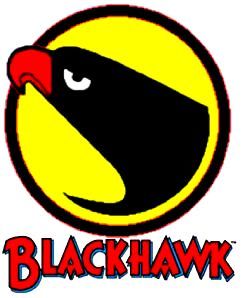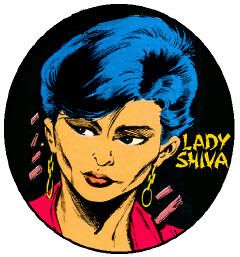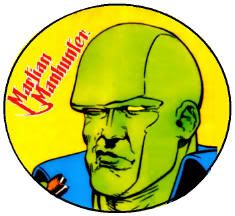
Visit the Irredeemable Shag's Firestorm Fan for more on this postcard!
It’s always possible I caught Firestorm in a house ad from the few DC books that found their way to me as a kid, but the character didn’t make an impression until the 1983 DC Sampler. The book was a teaser for upcoming and ongoing projects, back in the days when companies would commission brand new promotional material. The Fury of Firestorm, the Nuclear Man was awarded a two page spread by the dynamic Pat Broderick, fresh from Marvel and quite the feather in DC’s cap. I developed a love for Jim Starlin early on, and Broderick had once drawn his version of Captain Mar-Vell. My favorite heroes back then were the intensely driven, highly capable hero’s heroes who defended big concepts and fought for colossal stakes. The Broderick image showed a determined Firestorm exhibiting enormous power alongside a member of his own burgeoning super-family, Flamebird. It was obvious Firestorm was not some dated character, but a product of our time, yet impressive enough to stand beside the greats of previous ages. I later learned the Nuclear Man had taken on the entire Justice League once, and could generate kryptonite at will. Dang, did I want to read his book!
I read Firestorm’s book all right, but he fell far short of a magnificent bastard. Gerry Conway was one of my favorite Bronze Age writers, but on this title he came off lame, and Broderick had left the book early on. Painted broadly, Ronnie Raymond was a Peter Parker type, the “hero that could be you” with feet of clay. However, Spider-Man was a hell of a lot smarter than Ronnie, and what Firestorm could do was usually dictated by an “old” man who lived inside Firestorm’s head and was part of the gestalt being. That idea was novel, but I didn’t much care about either Raymond or his Professor Martin Stein. Further, Firestorm’s awesome powers came with all sorts of limitations, like an inability to effect organic matter. Also, Firestorm had one of the worst rogues’ galleries possible, fighting were-hyenas, guys who performed rope tricks, and guys who could separate into ever tinier duplicates of themselves. Firestorm looked increasingly less like a cosmic Starlin champion, and more like a bumbling parody along the lines of the Greatest American Hero.
Firestorm looked neat, and he hung out with guys like Blue Devil that I was cool with, so I wanted to like him. Later in the decade, Firestorm had a traumatic experience and merged with a Russian super-hero, leaving him a spooky blank-eyed enigma. Around the same time, another Bronze Age favorite, Cary Bates, had come out with a revival of Captain Atom. The art was by Pat Broderick, and the book stole one of Firestorm’s few good villains, Plastique. Captain Atom had quantum powers that were visually arresting and quite formidable, and his military background gave him the focus to use them well. Captain Atom and Firestorm began meeting irregularly as frienemies, but even though the Nuclear Man was the more experienced hero Post-Crisis by yards, Atom’s maturity made him seem like the veteran. Since Captain Atom was everything I had always wanted Firestorm to be, I kept up with his book and dropped the other.
Firestorm writer John Ostrander must have been a big Alan Moore fan, because he seemed to want to write Swamp Thing so bad he turned the Nuclear Man into that character by proxy. Suddenly, there was this soft spoken Fire Elemental getting tangled up in mystical forces around the globe, and Firestorm took on a whole new flavor of disinterest to me. Laying low for a few years, the old Ronnie Firestorm resurfaced in the ‘90s, even less responsible and adept with his powers than ever. Once Firestorm became a drunken lout, I’d had it. I figured whatever potential Ronnie Raymond had as a hero was long squandered, and that he should steal back from Captain Atom by turning into a villain. Firestorm’s overwrought history would support the move, and maybe then he could actually use his dang powers to the fullest. Even the flaming visuals worked, as evidenced by Dr. Light’s lifting of the basic look for one of his failed salvage jobs in the ‘90s.
The aughts brought the death of Ronnie Raymond and the invention of Jason Rusch. As a proponent of more (and more powerful) African-American heroes in comics, I fully supported the change, plus Rusch’s skin tone was a better compliment to Firestorm’s red and yellow costume. Unfortunately, the new book came out at the height of decompressed storytelling, so it took forever to go anywhere. Rusch’s origin was tied to a drug deal, which made me wince, and the character was much too passive to carry a title. I dropped the book for a couple of months, until the return of Raymond and a shaking of the status quo was teased. That run ended on a high note, but the promised changes were stretched out for months thereafter, pushed back repeatedly by one sales humping crossover tie-in after another. Finally, Rusch was merged with not one, but two successive white characters, another cliché that haunts books with black leads. After 2 ½ years of waiting for this new Firestorm to get it together, I finally gave up, right before DC did the same through cancellation. Rusch later turned up in other books as a member of the Justice League, and he showed more personality, but he was still the guy getting beat-up by villains and hanging from the sidelines.
I still want to like Firestorm, but I think for the most part his moment has passed. The Nuclear Man was ahead of his time in the ‘70s, created as a reflection of the closing days of the Cold War, the fear of Three Mile Island/Chernobyl/etc., and the hope for a new generation of heroes. Today, Firestorm is hopelessly dated, a child of the ‘80s, and even Jason Rusch felt like a ‘90s revamp with his Prince sigils and armored portions. Maybe if Firestorm were played period, or if he were part of a team where he mattered, I could truly become a fan. Certainly, I still get excited when an artist draws him well, or when a writer offers the promise of a new direction for the character. Until Firestorm finally finds his place though, he’ll remain just another nostalgia piece among many, waiting for Alex Ross to show love to the Super Powers Collection.

















1 comment:
Well said across the board.
Post a Comment